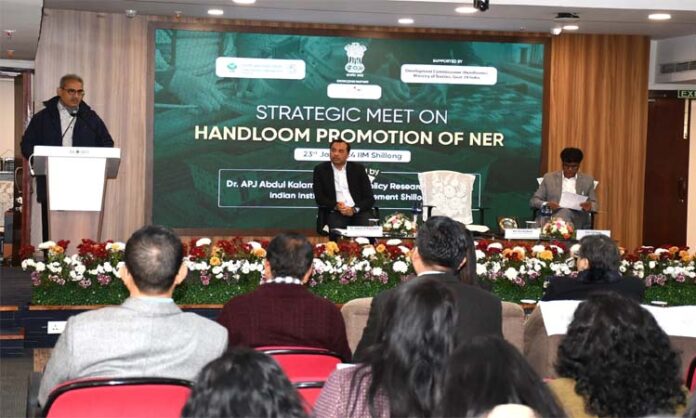Dr. Sanjeev Ningombam, the Centre Coordinator of the Kalam Centre, stated that the purpose of the strategic meeting on handloom promotion is to address stakeholder concerns while concentrating on the agenda item of “Textiles as Driver NER Economy.” Sessions including “Innovation and Design Intervention,” “Marketing Integration of Handloom Products,” “Business Strategy,” and “Cluster Development” were scheduled for the event. There was an exclusive session on Idea Exchange where stakeholders presented their ideas and best practises.
Speakers discussed various perspectives on promoting handloom by focusing on the unique identity and culture of specific tribes’ weaving traditions. It was discussed at length to integrate culture and tradition with commerce through design intervention and innovation. This approach aimed to not only preserve the heritage of these tribes but also create sustainable livelihood opportunities for the weavers.
By combining traditional techniques with contemporary designs, it was believed that handloom products could appeal to a wider market and ensure the economic
empowerment of these communities. The North Eastern Region in India has the highest concentration of handlooms, with 14.6 lakh units in five states. Despite its rich cultural heritage and traditional craftsmanship, the region faces challenges in commercial production and fabric output. Improving infrastructure, market access, and skill development can help harness the region’s potential.
One of the session’s main conclusions was that the region needed to develop a market for handwoven goods. The absence of cooperative societies in the area is a problem that requires our collective attention in order to restore cooperative societies capable of advancing production. In order to capture a market, it is imperative to combine modern and traditional components.
The deliberation emphasized sustainable fashion and consumerism, highlighting low investment as a cause for lack of innovation. Changing product lineups can create niche markets.














